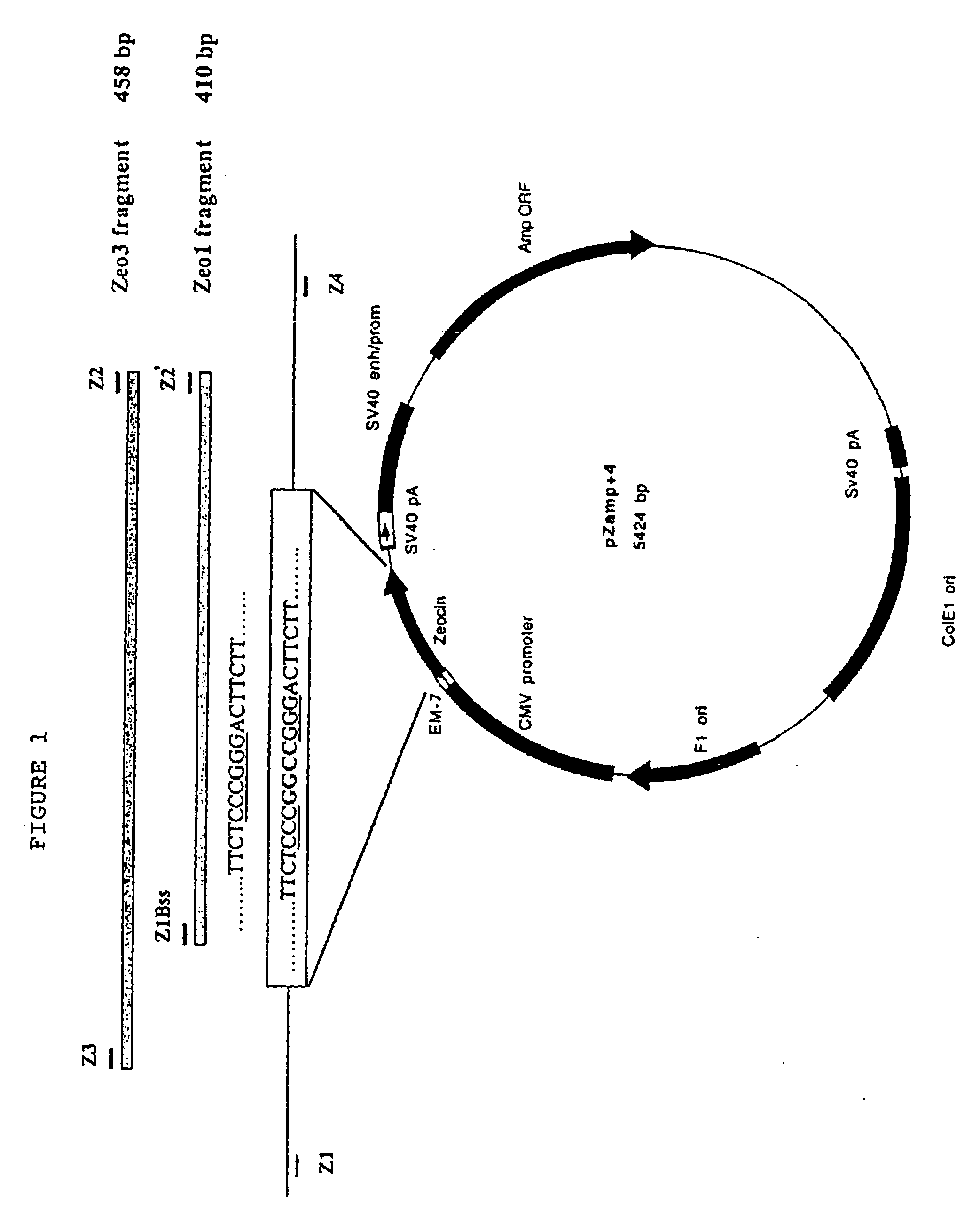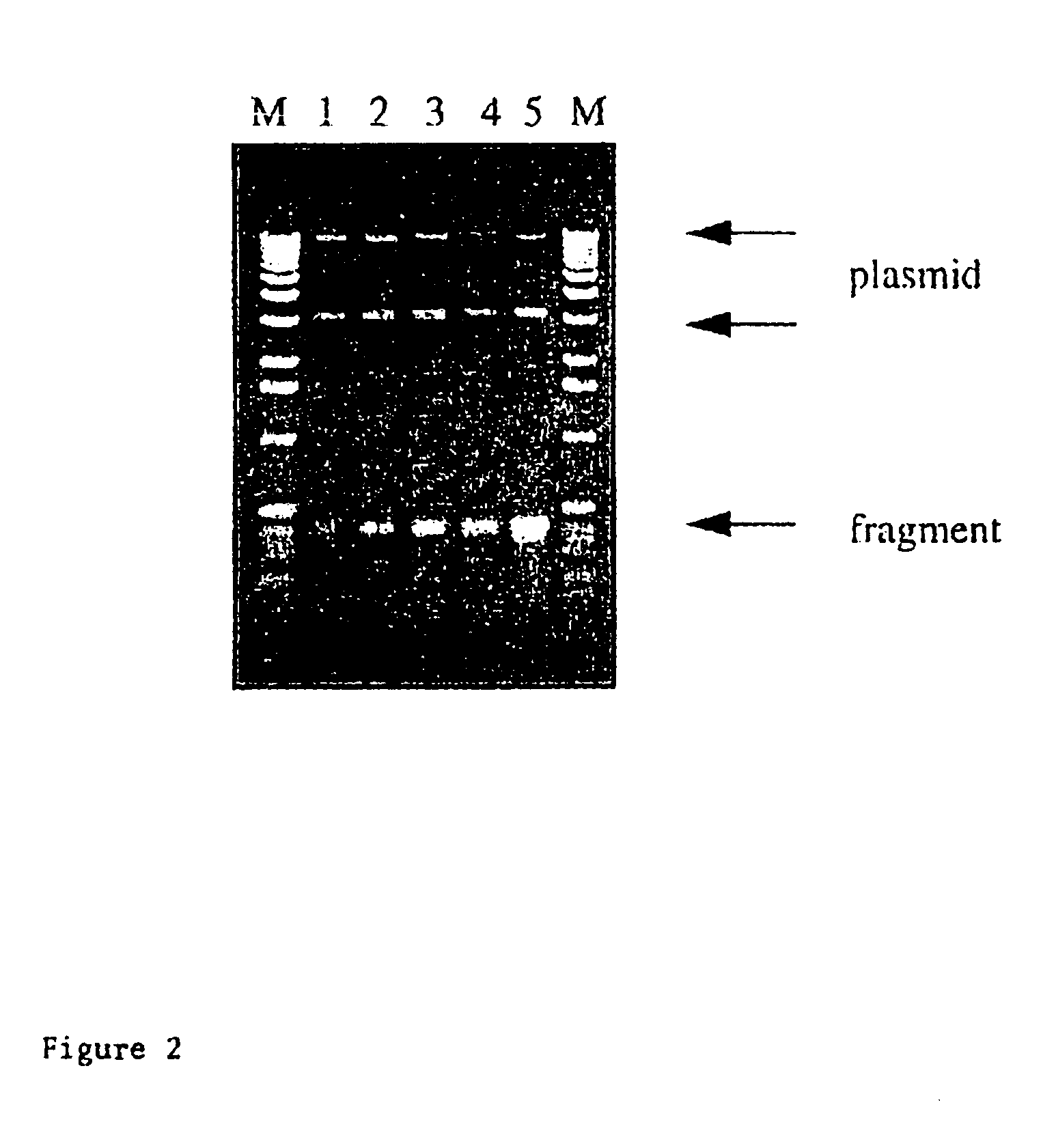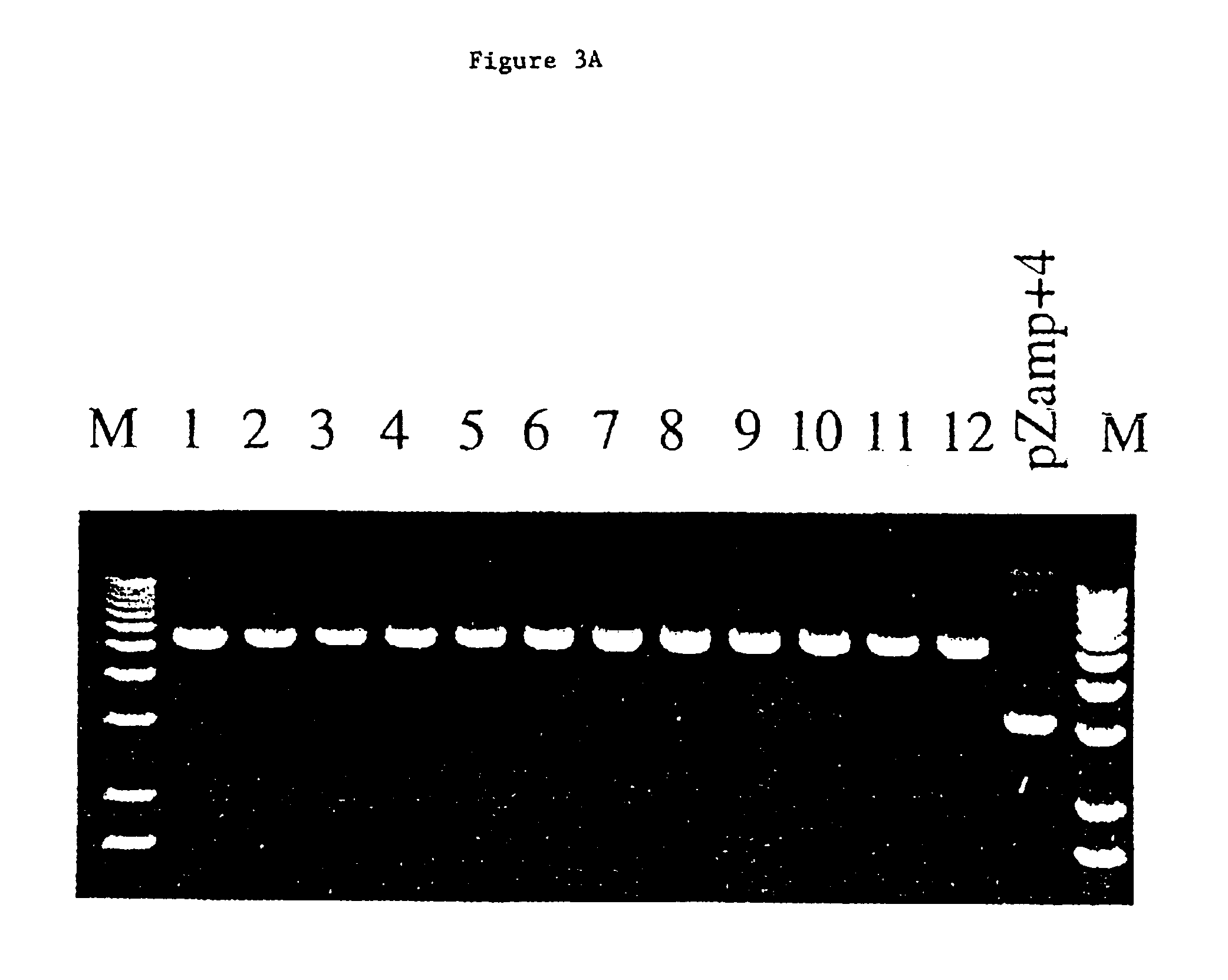Expression vector system and a method for optimization and confirmation of DNA delivery and quantification of targeting frequency
- Summary
- Abstract
- Description
- Claims
- Application Information
AI Technical Summary
Benefits of technology
Problems solved by technology
Method used
Image
Examples
example 1
Cells
[0152]This example describes SV40-transformed cells and procedure used for their growth and culturing.
[0153]SV40-transformed cystic fibrosis bronchial epithelial cells (CFBE41o−), according to PNAS, USA, 85:5951 (1988), homozygous for the ΔF508 CFTR mutation were used. Cells were grown in Eagles minimal essential medium (MEM) supplemented with 10% fetal bovine serum (FBS), 2 mM L-Glutamine, 1% penicillin / streptomycin, at 37° C. in 5% CO2-95% air. All the cultures were maintained in flasks or dishes pre-coated with an extracellular matrix of fibronectin-Vitrogen-bovine serum albumin (FN / V?BSA), according to In Vitro Cell Dev. Biol., 26:411 (1990). ElectroMax E. coli DH10B (Rec A1−) cells (Life technologies, CA) were used for the bacterial transformation studies.
example 2
Plasmid Construction
[0154]This example describes the procedure used for construction of plasmid.
[0155]The plasmid pZamp, was constructed by introducing the ampicillin gene from pcDNA3 (Invitrogen, Calif.) (fragment SaII-PvuII), into the multiple cloning site of pZeoSV (XhoI-PvuII) (Invitrogen, Calif.). The pZeoSV plasmid contains Zeocin™ antibiotic resistance (zeor) gene under CMV (eukaryotic) and EM-7 (prokaryotic) promoters. The resultant pZamp vector was then linearized at a unique, Xmal restriction enzyme cleavage site within the coding sequence of the zeor gene.
[0156]The linearized vector was incubated with Klenow enzyme to fill in the overlapping bases and then ligated. The resultant vector, pZamp+4, seen in FIG. 1, carries a 4-bp insertion that eliminates the Xmal restriction site, and is no longer resistant to the Zeocin™ antibiotic in either prokaryotic or eukaryotic cells. The presence of the ampicillin gene allows for bacterial transformation and selection. Plasmid DNA wa...
example 3
Fragment Preparation
[0158]This example describes the preparation of DNA fragments Zeo1 and Zeo3.
[0159]Two different DNA fragments, Zeo1 and Zeo3 (410- and 458-bp, respectively), as seen in FIG. 1, were employed for targeting. Both fragments contain the wt-zeor gene sequence and were prepared by PCR as previously described in Hum. Mol. Genet., 7:1913 (1998).
[0160]Primers:
[0161]Z1Bss (5′GCGCGCGACGTCGCCGGAGCG-3′) (sense) (SEQ ID NO: 1); and
[0162]Z2 (5′-AACAAGTTTCGAGGTCGACCCC-3′) (antisense) (SEQ ID NO: 2).
[0163]Primers Z1Bss and Z2 were used to generate the Zeo1fragment. Primers Z3 (5′-TAGGAGGGCCACCATGGCCA-3″) (sense) (SEQ ID NO: 3) and Z2 (antisense) were used for the Zeo3 fragment.
[0164]The PCR conditions were as follows: initial denaturation, 95° C. / 2 minutes followed by 25 cycles of denaturation, 95° C. / 5 seconds; annealing 65° C. / 20 seconds; extension, 72° C. / 20 with a 7 minute extension in the final cycle. The PCR mixture contained: 0.2 mM dNTPs, 0.2 μM primers, 1× DMSO, 1× Pfu r...
PUM
| Property | Measurement | Unit |
|---|---|---|
| Angle | aaaaa | aaaaa |
| Angle | aaaaa | aaaaa |
| Angle | aaaaa | aaaaa |
Abstract
Description
Claims
Application Information
 Login to View More
Login to View More - R&D
- Intellectual Property
- Life Sciences
- Materials
- Tech Scout
- Unparalleled Data Quality
- Higher Quality Content
- 60% Fewer Hallucinations
Browse by: Latest US Patents, China's latest patents, Technical Efficacy Thesaurus, Application Domain, Technology Topic, Popular Technical Reports.
© 2025 PatSnap. All rights reserved.Legal|Privacy policy|Modern Slavery Act Transparency Statement|Sitemap|About US| Contact US: help@patsnap.com



